 In our continued attempt to bring you, the KSR readers, the best writers covering UK Athletics, we are adding a new slot to the rotation. Jonathan Miller is likely the most distinguished KSR poster ever in the world outside of UK Athletics. He was once the Ky State Treasurer and has spent a lifetime in and around Kentucky politics. But his life is actually more interesting than that makes him sound, because he has accomplished other tasks as well, including making the final table at an event at The World Series of Poker. He no longer is part of the political world, leaving it in the same way Matt left the legal profession (as quickly as possible). This gives him more time to focus on his other interests, such as UK basketball. He will post here on KSR on Sunday nights. His writings have been published with many national outlets and he will almost certainly use the biggest words of any writer that has ever graced this blog. We are glad to have him aboard and for your reference he is the one in the picture above on the far left
In our continued attempt to bring you, the KSR readers, the best writers covering UK Athletics, we are adding a new slot to the rotation. Jonathan Miller is likely the most distinguished KSR poster ever in the world outside of UK Athletics. He was once the Ky State Treasurer and has spent a lifetime in and around Kentucky politics. But his life is actually more interesting than that makes him sound, because he has accomplished other tasks as well, including making the final table at an event at The World Series of Poker. He no longer is part of the political world, leaving it in the same way Matt left the legal profession (as quickly as possible). This gives him more time to focus on his other interests, such as UK basketball. He will post here on KSR on Sunday nights. His writings have been published with many national outlets and he will almost certainly use the biggest words of any writer that has ever graced this blog. We are glad to have him aboard and for your reference he is the one in the picture above on the far left
As the promise of yet another magical basketball season envelops the hills, hollers and hamlets of the Bluegrass State in a kind of euphoric delirium, the Big Blue Nation once again finds itself bracing for a deluge of outsider outrage.
It’s become an all-too-familiar scene: The pointy-headed academics and intellectuals, the cable news screaming heads, all gnashing their over-polished bridgework, complaining that Kentucky basketball embodies to them everything that is wrong with the game, indeed with college sport as a whole. The focus of special ire is head coach John Calipari, for his diabolical exploitation of rules like “one and done,” in luring susceptible teenagers with a vision of NBA fame, fortune and celebrity, if only they join his unsavory cabal. The righteous guardians of the Athenian ideal of amateur student athletics loudly decrying the vulgar capitalist reality…in the form of a collection of mostly African-American young men representing one of the nation’s poorest states.
In this, my virgin splash into the KSR waters, I must reveal my not-so-secret identity:
I’m one of them.
Yes, I’m Jonathan, and I’m a
recovering politician.
And I’m a card-carrying member of the pretentious fraternity of self-important geeks who never could have pledged a fraternity…with an overpriced education and a lengthy series of wonky
op-ed columns, mouthy TV
talk show appearances and highfalutin
policy books under my belt. I’ve spent two decades walking in
their corridors of power, kibitzing in
their green rooms, eating
their cocktail party heavy hors d’oeuvres.
Of course, many of their gripes with college hoops are quite legitimate. From the
economic exploitation of teenage athletes, to the shady
shoe contracts secured by its plutocratic coaches, to the
blatantly unfair and hypocritical NCAA governance regime — big-time, big-money college roundball leaves many the casual fan with a guilty hangover after the last shimmy of the Big Dance in April.
But the knee-jerk, broad-brushed condemnation of Kentucky basketball emerges from a separate, more intimate truth: Since middle school, much of my kind – the jump shot-challenged intelligentsia, that is – have scoffed at the popularity, coddling, and public financing of the jock culture. College is
our sacred realm – for academics, scholarship and research, not professional sports-grooming.
However, in rooting against the team that has mastered the flawed system, the critics are missing a greater truth: The keys to fixing the sport’s soul can be found precisely in the qualities that make Kentucky basketball so special. For while cerebral baseball and primal football continue to be heralded as our national pastimes; college basketball, particularly here in the heartland, really does matter.
At its core, basketball is the most populist and egalitarian of major sports. Its character derives in part from its tiny barriers to entry–all you need is a ball and a hoop to practice alone, and a bona fide game can be played with just a pal or a small group of friends. While its complex choreography and mosaic interpersonal psychodynamics are often underestimated, basketball is the simplest game to understand and appreciate. Ball goes into basket; your team scores. A contest’s time is precise and limited; its court dimensions, clear and uniform: As Gene Hackman
famously proved in
Hoosiers, the rim is always exactly ten feet from the ground whether at an urban playground or in a professional arena.
Basketball is also the ultimate spectator sport. Unlike radio-friendly baseball or HDTV-enhanced football, hoops are best enjoyed in person. With much, much less downtime than the Big Two, basketball games are filled with relentless exhibitions of artistry in action–colorful feats of intensely-rehearsed talent and gravity-defying acrobatics, while the participants remain in near constant motion. Because the vertical plane is regularly pierced, only basketball can provide those rare, sublime moments of transcendental grace. The courtside crowd isn’t distracted by the weather, organ player, food, bands, or tailgating: Until the final buzzer sounds, the game itself is the only thing that matters.
Whether in a high school gym or a professional arena, the game is played indoors, the fans on top of the action, literally involved in the hum and flow of the game, the most intimate among the major sports. In a game in which improvised and instinctual play is the norm, where fatigue and self-confidence are critical to performance, an enlivened and vocal crowd can provide enormous emotional and psychological comfort to the home squad, or can harass and dispirit the visitors. A home crowd–particularly at the college or high school level–becomes, for a few hours at least, a cohesive, interdependent community: Fans who might disagree sharply on matters of politics, religion, lifestyle, or just about any topic, join voices in passionate advocacy of their squad, or, almost as often, in intense criticism of the referees. It’s no coincidence that in many rural communities, most community-building events–graduation ceremonies, formal dances, citizen forums–take place in the high school gym.
Indeed — warning: be prepared for some real wonk-dom -- a potent
communitarian strand of populism is modeled in the game itself. Bill Simmons’ bestseller,
The Book of Basketball, reads in places like a
Michael Sandel philosophy lecture or a 1968
Bobby Kennedy campaign speech: “The secret of basketball is that it’s not about basketball…Teams only win titles when their best players forget about statistics, sublimate their own games for the greater good and put their egos on hold.” And the greatest of the greats – Jordan, Magic, Bird – only earned their iconic status
after they learned to surrender their own self-interest (high scoring averages) for the common good (winning championships), a noteworthy lesson in unselfishness and the Golden Rule for the boys, girls, and grownups who consider these hardwood heroes role models.
There’s been no better example of this phenomenon than last year’s Kentucky Wildcat squad. Heralded last year as the
best recruiting class in the history of college basketball, the freshmen-dominated Wildcat team suffered through a disappointing regular season – falling from number one in the preseason polls to out of the top 25 by season’s end. Undeniably, these teenage phenoms were extraordinarily talented individual ballers, but they simply weren’t gelling as a cohesive unit. It wasn’t until postseason that they learned to overcome their stereotypically-Millenneal narcissism and played selfless ball. And as a result, they shocked their way to the NCAA Championship game and emerged as one of the most beloved teams in the long, long lore of the blue and white tradition.
It’s no wonder then why college hoops have made such a remarkable and substantive impact on education at the University of Kentucky. The administration understands that many Kentucky families – especially those in the most remote, economically-depressed areas of the state – dream of sending their kids to UK, and it has leveraged roundball prowess to help market and fund all of its major academic initiatives and capital campaigns, including its ambitious long-term effort to transform the school into a Top 20 public research university. And while it’s an unusual, although not a unique, collegiate example, UK basketball not only sustains itself financially; but along with football, its profits help enable the athletic department – with 20 other sports teams—- to pay for itself,
plus provide
millions of dollars to the school for non-athletic scholarships
There’s also been perhaps no force more powerful for racial fence-mending, at least here in the South. A half century since UK’s all-white “Rupp’s Runts” lost the
national championship to Texas Western’s history-making all-black starting lineup – the whitest of all southern states has fallen in love with a series of teams composed almost entirely of African-American teenagers. We’ve reveled in their soul swagger and hip-hop sentimentality — few Kentuckians will ever forget how to perform the “
John Wall Dance,” the shimmy sensation of the winter of 2009-10.
That craze prompted another elite African-American point guard to enter Kentucky lore that February when he stood at Rupp Arena’s center court to perform a hallowed ritual of the Big Blue Nation: After a group of cheerleaders contorted their bodies on the hardwood floor to spell out the first seven letters of the state’s name, Earvin “Magic” Johnson lifted his arms high into the air, and became, for one shining moment, the living embodiment of the letter “Y.” The “Y” tradition borders on a holy sacrament in Kentucky; the modern equivalent of a high priest standing in the middle of the Great Temple, reaching toward the heavens, bringing the blue-attired congregation to its feet and lifting the faithful into frenzied spiritual revival.
But Johnson added a special touch: The legend smoothly transitioned his right arm into a John Wall Dance. The crowd erupted into an authentic, communal embrace of pure joy, radiating off of Magic’s trademark supernova smile. Johnson has no roots in the state, nor any connection to the team, but his gesture united two generations of basketball lovers, and it provided a bond that transcended our differences. That, sports fans, defines populism. And it articulated, without words, why college basketball matters.
Earlier that afternoon, in the State Capitol Rotunda, Magic had waded through the friendliest of mobs–mostly white, the crowd slowly jostling forward, lunging for an autograph, photograph, or simply to touch the towering African-American. A few feet away, the statues of Civil War adversaries Abraham Lincoln and Jefferson Davis stood in stark repose; in their time, that same scene would have conveyed a far different meaning.
===
It’s this religious connection between our culture and the games that we love that will be the focus of this column every Sunday night. I’ll share my thoughts on how society can help fix the problems inherent in sport, and how sport can help fix the problems inherent in society. And I will be holding our key institutions — whether the NCAA, the NFL or the Congress -- to the same standards that are modeled on the court and imitated by the fan base: equality, selflessness, and community.
Kentucky basketball truly reflects American values. And it’s high time that the rest of us followed its example.
(This essay includes excerpts of musings previously published at TheRecoveringPolitician.com) In our continued attempt to bring you, the KSR readers, the best writers covering UK Athletics, we are adding a new slot to the rotation. Jonathan Miller is likely the most distinguished KSR poster ever in the world outside of UK Athletics. He was once the Ky State Treasurer and has spent a lifetime in and around Kentucky politics. But his life is actually more interesting than that makes him sound, because he has accomplished other tasks as well, including making the final table at an event at The World Series of Poker. He no longer is part of the political world, leaving it in the same way Matt left the legal profession (as quickly as possible). This gives him more time to focus on his other interests, such as UK basketball. He will post here on KSR on Sunday nights. His writings have been published with many national outlets and he will almost certainly use the biggest words of any writer that has ever graced this blog. We are glad to have him aboard and for your reference he is the one in the picture above on the far left
As the promise of yet another magical basketball season envelops the hills, hollers and hamlets of the Bluegrass State in a kind of euphoric delirium, the Big Blue Nation once again finds itself bracing for a deluge of outsider outrage.
It’s become an all-too-familiar scene: The pointy-headed academics and intellectuals, the cable news screaming heads, all gnashing their over-polished bridgework, complaining that Kentucky basketball embodies to them everything that is wrong with the game, indeed with college sport as a whole. The focus of special ire is head coach John Calipari, for his diabolical exploitation of rules like “one and done,” in luring susceptible teenagers with a vision of NBA fame, fortune and celebrity, if only they join his unsavory cabal. The righteous guardians of the Athenian ideal of amateur student athletics loudly decrying the vulgar capitalist reality…in the form of a collection of mostly African-American young men representing one of the nation’s poorest states.
In this, my virgin splash into the KSR waters, I must reveal my not-so-secret identity:
I’m one of them.
Yes, I’m Jonathan, and I’m a recovering politician.
And I’m a card-carrying member of the pretentious fraternity of self-important geeks who never could have pledged a fraternity…with an overpriced education and a lengthy series of wonky op-ed columns, mouthy TV talk show appearances and highfalutin policy books under my belt. I’ve spent two decades walking in their corridors of power, kibitzing in their green rooms, eating their cocktail party heavy hors d’oeuvres.
Of course, many of their gripes with college hoops are quite legitimate. From the economic exploitation of teenage athletes, to the shady shoe contracts secured by its plutocratic coaches, to the blatantly unfair and hypocritical NCAA governance regime — big-time, big-money college roundball leaves many the casual fan with a guilty hangover after the last shimmy of the Big Dance in April.
But the knee-jerk, broad-brushed condemnation of Kentucky basketball emerges from a separate, more intimate truth: Since middle school, much of my kind – the jump shot-challenged intelligentsia, that is – have scoffed at the popularity, coddling, and public financing of the jock culture. College is our sacred realm – for academics, scholarship and research, not professional sports-grooming.
However, in rooting against the team that has mastered the flawed system, the critics are missing a greater truth: The keys to fixing the sport’s soul can be found precisely in the qualities that make Kentucky basketball so special. For while cerebral baseball and primal football continue to be heralded as our national pastimes; college basketball, particularly here in the heartland, really does matter.
At its core, basketball is the most populist and egalitarian of major sports. Its character derives in part from its tiny barriers to entry–all you need is a ball and a hoop to practice alone, and a bona fide game can be played with just a pal or a small group of friends. While its complex choreography and mosaic interpersonal psychodynamics are often underestimated, basketball is the simplest game to understand and appreciate. Ball goes into basket; your team scores. A contest’s time is precise and limited; its court dimensions, clear and uniform: As Gene Hackman famously proved in Hoosiers, the rim is always exactly ten feet from the ground whether at an urban playground or in a professional arena.
Basketball is also the ultimate spectator sport. Unlike radio-friendly baseball or HDTV-enhanced football, hoops are best enjoyed in person. With much, much less downtime than the Big Two, basketball games are filled with relentless exhibitions of artistry in action–colorful feats of intensely-rehearsed talent and gravity-defying acrobatics, while the participants remain in near constant motion. Because the vertical plane is regularly pierced, only basketball can provide those rare, sublime moments of transcendental grace. The courtside crowd isn’t distracted by the weather, organ player, food, bands, or tailgating: Until the final buzzer sounds, the game itself is the only thing that matters.
Whether in a high school gym or a professional arena, the game is played indoors, the fans on top of the action, literally involved in the hum and flow of the game, the most intimate among the major sports. In a game in which improvised and instinctual play is the norm, where fatigue and self-confidence are critical to performance, an enlivened and vocal crowd can provide enormous emotional and psychological comfort to the home squad, or can harass and dispirit the visitors. A home crowd–particularly at the college or high school level–becomes, for a few hours at least, a cohesive, interdependent community: Fans who might disagree sharply on matters of politics, religion, lifestyle, or just about any topic, join voices in passionate advocacy of their squad, or, almost as often, in intense criticism of the referees. It’s no coincidence that in many rural communities, most community-building events–graduation ceremonies, formal dances, citizen forums–take place in the high school gym.
Indeed — warning: be prepared for some real wonk-dom -- a potent communitarian strand of populism is modeled in the game itself. Bill Simmons’ bestseller, The Book of Basketball, reads in places like a Michael Sandel philosophy lecture or a 1968 Bobby Kennedy campaign speech: “The secret of basketball is that it’s not about basketball…Teams only win titles when their best players forget about statistics, sublimate their own games for the greater good and put their egos on hold.” And the greatest of the greats – Jordan, Magic, Bird – only earned their iconic status after they learned to surrender their own self-interest (high scoring averages) for the common good (winning championships), a noteworthy lesson in unselfishness and the Golden Rule for the boys, girls, and grownups who consider these hardwood heroes role models.
There’s been no better example of this phenomenon than last year’s Kentucky Wildcat squad. Heralded last year as the best recruiting class in the history of college basketball, the freshmen-dominated Wildcat team suffered through a disappointing regular season – falling from number one in the preseason polls to out of the top 25 by season’s end. Undeniably, these teenage phenoms were extraordinarily talented individual ballers, but they simply weren’t gelling as a cohesive unit. It wasn’t until postseason that they learned to overcome their stereotypically-Millenneal narcissism and played selfless ball. And as a result, they shocked their way to the NCAA Championship game and emerged as one of the most beloved teams in the long, long lore of the blue and white tradition.
It’s no wonder then why college hoops have made such a remarkable and substantive impact on education at the University of Kentucky. The administration understands that many Kentucky families – especially those in the most remote, economically-depressed areas of the state – dream of sending their kids to UK, and it has leveraged roundball prowess to help market and fund all of its major academic initiatives and capital campaigns, including its ambitious long-term effort to transform the school into a Top 20 public research university. And while it’s an unusual, although not a unique, collegiate example, UK basketball not only sustains itself financially; but along with football, its profits help enable the athletic department – with 20 other sports teams—- to pay for itself, plus provide millions of dollars to the school for non-athletic scholarships
There’s also been perhaps no force more powerful for racial fence-mending, at least here in the South. A half century since UK’s all-white “Rupp’s Runts” lost the national championship to Texas Western’s history-making all-black starting lineup – the whitest of all southern states has fallen in love with a series of teams composed almost entirely of African-American teenagers. We’ve reveled in their soul swagger and hip-hop sentimentality — few Kentuckians will ever forget how to perform the “John Wall Dance,” the shimmy sensation of the winter of 2009-10.
That craze prompted another elite African-American point guard to enter Kentucky lore that February when he stood at Rupp Arena’s center court to perform a hallowed ritual of the Big Blue Nation: After a group of cheerleaders contorted their bodies on the hardwood floor to spell out the first seven letters of the state’s name, Earvin “Magic” Johnson lifted his arms high into the air, and became, for one shining moment, the living embodiment of the letter “Y.” The “Y” tradition borders on a holy sacrament in Kentucky; the modern equivalent of a high priest standing in the middle of the Great Temple, reaching toward the heavens, bringing the blue-attired congregation to its feet and lifting the faithful into frenzied spiritual revival.
But Johnson added a special touch: The legend smoothly transitioned his right arm into a John Wall Dance. The crowd erupted into an authentic, communal embrace of pure joy, radiating off of Magic’s trademark supernova smile. Johnson has no roots in the state, nor any connection to the team, but his gesture united two generations of basketball lovers, and it provided a bond that transcended our differences. That, sports fans, defines populism. And it articulated, without words, why college basketball matters.
Earlier that afternoon, in the State Capitol Rotunda, Magic had waded through the friendliest of mobs–mostly white, the crowd slowly jostling forward, lunging for an autograph, photograph, or simply to touch the towering African-American. A few feet away, the statues of Civil War adversaries Abraham Lincoln and Jefferson Davis stood in stark repose; in their time, that same scene would have conveyed a far different meaning.
===
It’s this religious connection between our culture and the games that we love that will be the focus of this column every Sunday night. I’ll share my thoughts on how society can help fix the problems inherent in sport, and how sport can help fix the problems inherent in society. And I will be holding our key institutions — whether the NCAA, the NFL or the Congress -- to the same standards that are modeled on the court and imitated by the fan base: equality, selflessness, and community.
Kentucky basketball truly reflects American values. And it’s high time that the rest of us followed its example.
(This essay includes excerpts of musings previously published at TheRecoveringPolitician.com)
In our continued attempt to bring you, the KSR readers, the best writers covering UK Athletics, we are adding a new slot to the rotation. Jonathan Miller is likely the most distinguished KSR poster ever in the world outside of UK Athletics. He was once the Ky State Treasurer and has spent a lifetime in and around Kentucky politics. But his life is actually more interesting than that makes him sound, because he has accomplished other tasks as well, including making the final table at an event at The World Series of Poker. He no longer is part of the political world, leaving it in the same way Matt left the legal profession (as quickly as possible). This gives him more time to focus on his other interests, such as UK basketball. He will post here on KSR on Sunday nights. His writings have been published with many national outlets and he will almost certainly use the biggest words of any writer that has ever graced this blog. We are glad to have him aboard and for your reference he is the one in the picture above on the far left
As the promise of yet another magical basketball season envelops the hills, hollers and hamlets of the Bluegrass State in a kind of euphoric delirium, the Big Blue Nation once again finds itself bracing for a deluge of outsider outrage.
It’s become an all-too-familiar scene: The pointy-headed academics and intellectuals, the cable news screaming heads, all gnashing their over-polished bridgework, complaining that Kentucky basketball embodies to them everything that is wrong with the game, indeed with college sport as a whole. The focus of special ire is head coach John Calipari, for his diabolical exploitation of rules like “one and done,” in luring susceptible teenagers with a vision of NBA fame, fortune and celebrity, if only they join his unsavory cabal. The righteous guardians of the Athenian ideal of amateur student athletics loudly decrying the vulgar capitalist reality…in the form of a collection of mostly African-American young men representing one of the nation’s poorest states.
In this, my virgin splash into the KSR waters, I must reveal my not-so-secret identity:
I’m one of them.
Yes, I’m Jonathan, and I’m a recovering politician.
And I’m a card-carrying member of the pretentious fraternity of self-important geeks who never could have pledged a fraternity…with an overpriced education and a lengthy series of wonky op-ed columns, mouthy TV talk show appearances and highfalutin policy books under my belt. I’ve spent two decades walking in their corridors of power, kibitzing in their green rooms, eating their cocktail party heavy hors d’oeuvres.
Of course, many of their gripes with college hoops are quite legitimate. From the economic exploitation of teenage athletes, to the shady shoe contracts secured by its plutocratic coaches, to the blatantly unfair and hypocritical NCAA governance regime — big-time, big-money college roundball leaves many the casual fan with a guilty hangover after the last shimmy of the Big Dance in April.
But the knee-jerk, broad-brushed condemnation of Kentucky basketball emerges from a separate, more intimate truth: Since middle school, much of my kind – the jump shot-challenged intelligentsia, that is – have scoffed at the popularity, coddling, and public financing of the jock culture. College is our sacred realm – for academics, scholarship and research, not professional sports-grooming.
However, in rooting against the team that has mastered the flawed system, the critics are missing a greater truth: The keys to fixing the sport’s soul can be found precisely in the qualities that make Kentucky basketball so special. For while cerebral baseball and primal football continue to be heralded as our national pastimes; college basketball, particularly here in the heartland, really does matter.
At its core, basketball is the most populist and egalitarian of major sports. Its character derives in part from its tiny barriers to entry–all you need is a ball and a hoop to practice alone, and a bona fide game can be played with just a pal or a small group of friends. While its complex choreography and mosaic interpersonal psychodynamics are often underestimated, basketball is the simplest game to understand and appreciate. Ball goes into basket; your team scores. A contest’s time is precise and limited; its court dimensions, clear and uniform: As Gene Hackman famously proved in Hoosiers, the rim is always exactly ten feet from the ground whether at an urban playground or in a professional arena.
Basketball is also the ultimate spectator sport. Unlike radio-friendly baseball or HDTV-enhanced football, hoops are best enjoyed in person. With much, much less downtime than the Big Two, basketball games are filled with relentless exhibitions of artistry in action–colorful feats of intensely-rehearsed talent and gravity-defying acrobatics, while the participants remain in near constant motion. Because the vertical plane is regularly pierced, only basketball can provide those rare, sublime moments of transcendental grace. The courtside crowd isn’t distracted by the weather, organ player, food, bands, or tailgating: Until the final buzzer sounds, the game itself is the only thing that matters.
Whether in a high school gym or a professional arena, the game is played indoors, the fans on top of the action, literally involved in the hum and flow of the game, the most intimate among the major sports. In a game in which improvised and instinctual play is the norm, where fatigue and self-confidence are critical to performance, an enlivened and vocal crowd can provide enormous emotional and psychological comfort to the home squad, or can harass and dispirit the visitors. A home crowd–particularly at the college or high school level–becomes, for a few hours at least, a cohesive, interdependent community: Fans who might disagree sharply on matters of politics, religion, lifestyle, or just about any topic, join voices in passionate advocacy of their squad, or, almost as often, in intense criticism of the referees. It’s no coincidence that in many rural communities, most community-building events–graduation ceremonies, formal dances, citizen forums–take place in the high school gym.
Indeed — warning: be prepared for some real wonk-dom -- a potent communitarian strand of populism is modeled in the game itself. Bill Simmons’ bestseller, The Book of Basketball, reads in places like a Michael Sandel philosophy lecture or a 1968 Bobby Kennedy campaign speech: “The secret of basketball is that it’s not about basketball…Teams only win titles when their best players forget about statistics, sublimate their own games for the greater good and put their egos on hold.” And the greatest of the greats – Jordan, Magic, Bird – only earned their iconic status after they learned to surrender their own self-interest (high scoring averages) for the common good (winning championships), a noteworthy lesson in unselfishness and the Golden Rule for the boys, girls, and grownups who consider these hardwood heroes role models.
There’s been no better example of this phenomenon than last year’s Kentucky Wildcat squad. Heralded last year as the best recruiting class in the history of college basketball, the freshmen-dominated Wildcat team suffered through a disappointing regular season – falling from number one in the preseason polls to out of the top 25 by season’s end. Undeniably, these teenage phenoms were extraordinarily talented individual ballers, but they simply weren’t gelling as a cohesive unit. It wasn’t until postseason that they learned to overcome their stereotypically-Millenneal narcissism and played selfless ball. And as a result, they shocked their way to the NCAA Championship game and emerged as one of the most beloved teams in the long, long lore of the blue and white tradition.
It’s no wonder then why college hoops have made such a remarkable and substantive impact on education at the University of Kentucky. The administration understands that many Kentucky families – especially those in the most remote, economically-depressed areas of the state – dream of sending their kids to UK, and it has leveraged roundball prowess to help market and fund all of its major academic initiatives and capital campaigns, including its ambitious long-term effort to transform the school into a Top 20 public research university. And while it’s an unusual, although not a unique, collegiate example, UK basketball not only sustains itself financially; but along with football, its profits help enable the athletic department – with 20 other sports teams—- to pay for itself, plus provide millions of dollars to the school for non-athletic scholarships
There’s also been perhaps no force more powerful for racial fence-mending, at least here in the South. A half century since UK’s all-white “Rupp’s Runts” lost the national championship to Texas Western’s history-making all-black starting lineup – the whitest of all southern states has fallen in love with a series of teams composed almost entirely of African-American teenagers. We’ve reveled in their soul swagger and hip-hop sentimentality — few Kentuckians will ever forget how to perform the “John Wall Dance,” the shimmy sensation of the winter of 2009-10.
That craze prompted another elite African-American point guard to enter Kentucky lore that February when he stood at Rupp Arena’s center court to perform a hallowed ritual of the Big Blue Nation: After a group of cheerleaders contorted their bodies on the hardwood floor to spell out the first seven letters of the state’s name, Earvin “Magic” Johnson lifted his arms high into the air, and became, for one shining moment, the living embodiment of the letter “Y.” The “Y” tradition borders on a holy sacrament in Kentucky; the modern equivalent of a high priest standing in the middle of the Great Temple, reaching toward the heavens, bringing the blue-attired congregation to its feet and lifting the faithful into frenzied spiritual revival.
But Johnson added a special touch: The legend smoothly transitioned his right arm into a John Wall Dance. The crowd erupted into an authentic, communal embrace of pure joy, radiating off of Magic’s trademark supernova smile. Johnson has no roots in the state, nor any connection to the team, but his gesture united two generations of basketball lovers, and it provided a bond that transcended our differences. That, sports fans, defines populism. And it articulated, without words, why college basketball matters.
Earlier that afternoon, in the State Capitol Rotunda, Magic had waded through the friendliest of mobs–mostly white, the crowd slowly jostling forward, lunging for an autograph, photograph, or simply to touch the towering African-American. A few feet away, the statues of Civil War adversaries Abraham Lincoln and Jefferson Davis stood in stark repose; in their time, that same scene would have conveyed a far different meaning.
===
It’s this religious connection between our culture and the games that we love that will be the focus of this column every Sunday night. I’ll share my thoughts on how society can help fix the problems inherent in sport, and how sport can help fix the problems inherent in society. And I will be holding our key institutions — whether the NCAA, the NFL or the Congress -- to the same standards that are modeled on the court and imitated by the fan base: equality, selflessness, and community.
Kentucky basketball truly reflects American values. And it’s high time that the rest of us followed its example.
(This essay includes excerpts of musings previously published at TheRecoveringPolitician.com)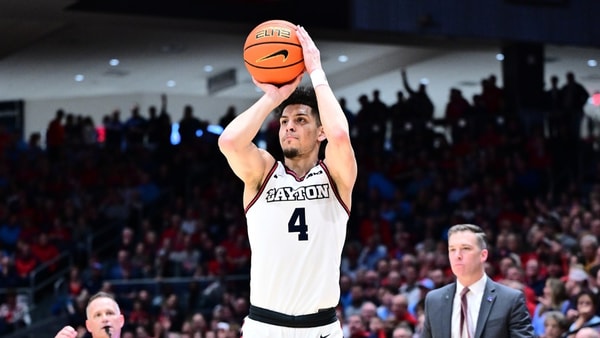
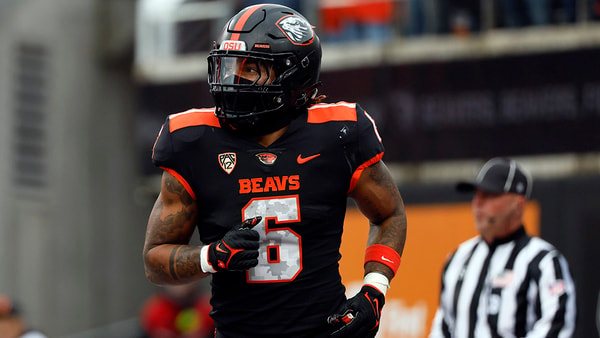
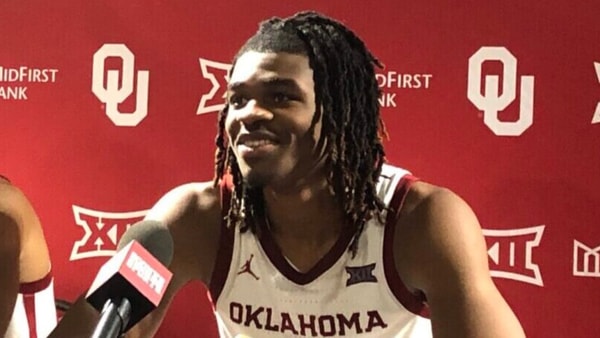
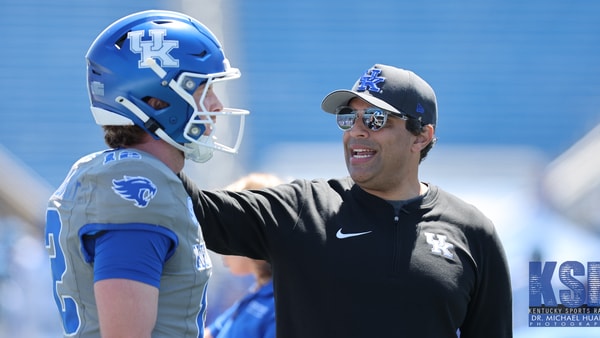
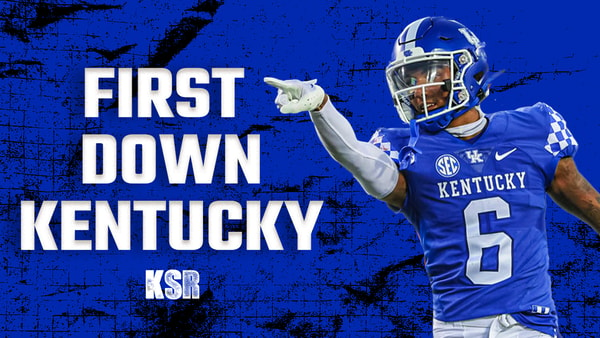
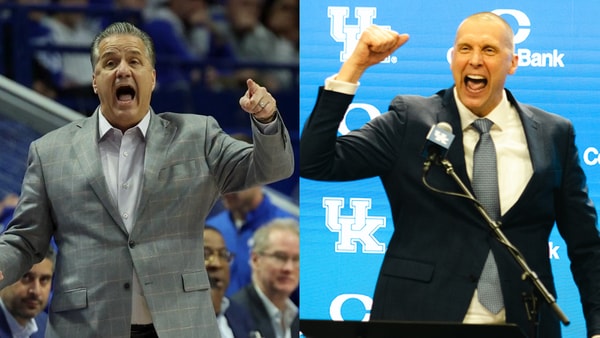
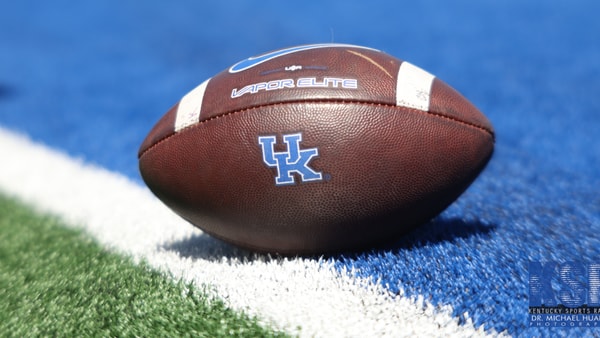
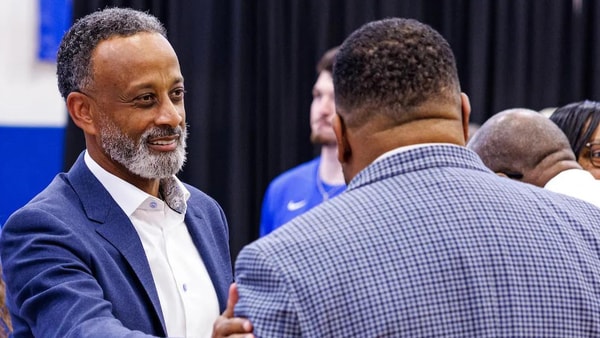
Discuss This Article
Comments have moved.
Join the conversation and talk about this article and all things Kentucky Sports in the new KSR Message Board.
KSBoard